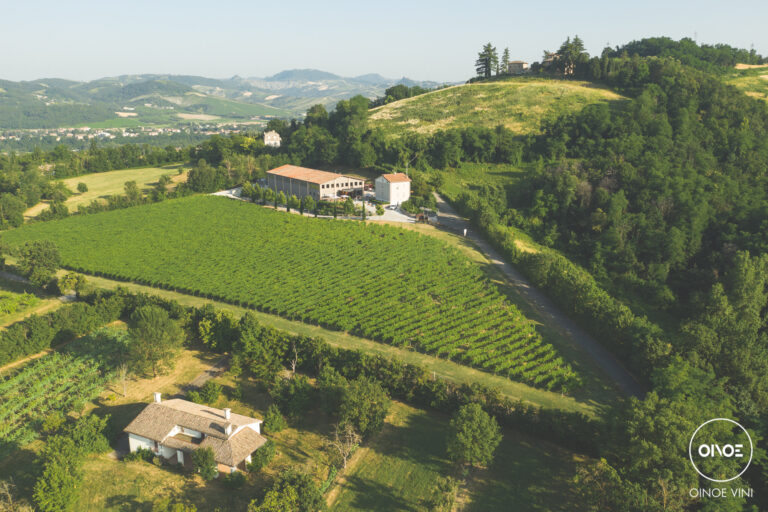Storing cured meats and cheeses in the cellar
Italian cured meats and cheeses are recognized worldwide for their quality, their inimitable flavor and for the different varieties that we find in each region. We are in Emilia, and how better to celebrate the excellence of the territory such as Parmigiano Reggiano, Prosciutto di Parma or Felino salami if not by developing cellars that can best preserve these products with a thousand-year history?
Good preservation of cured meats and cheeses requires special care and attention. Discover our tips
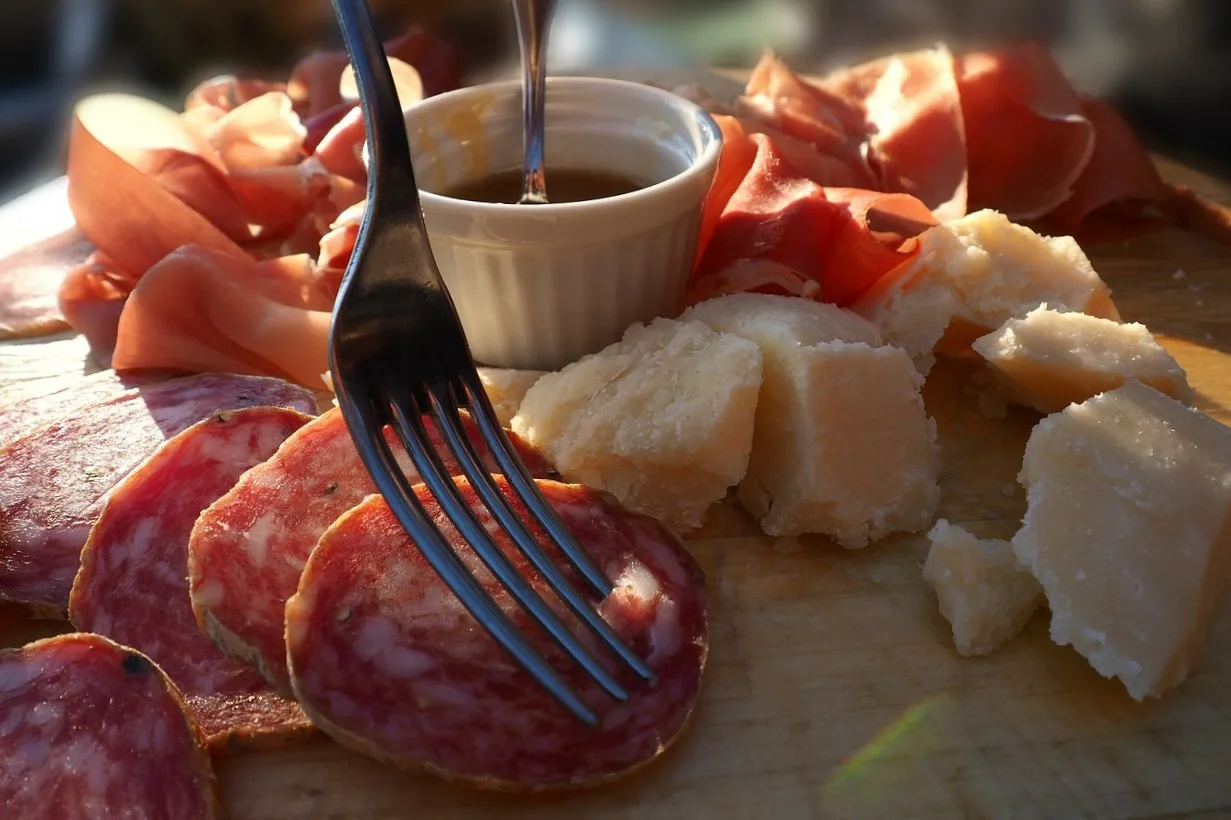
Owner and Production Manager
of IP Industrie del Freddo Spa
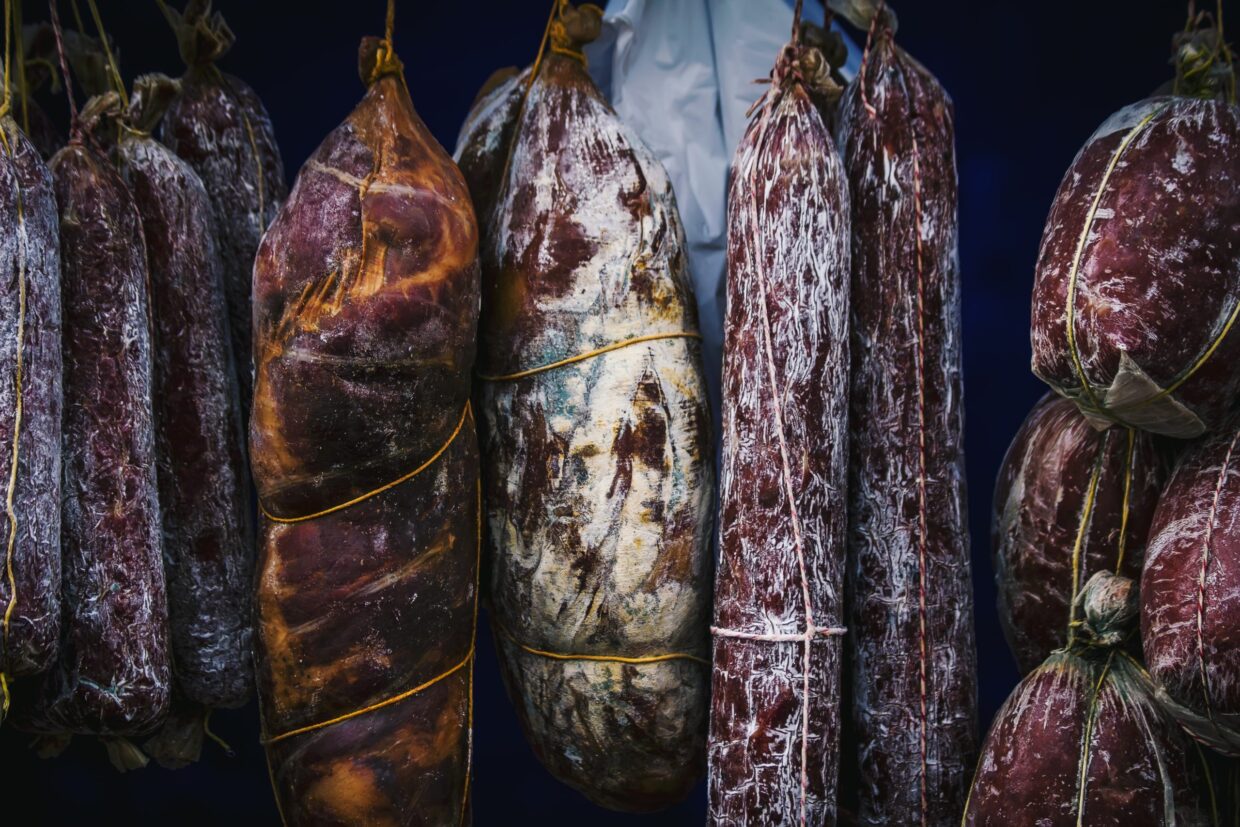
How to preserve cured meats: conservation techniques
Made in Italy is mainly about food. Italian cured meats such as prosciutto crudo, pancetta, coppa and salami, to name a few, are the result of typical traditions that stand out for their artisanal workmanship and quality. Right from the start, it is necessary to make a distinction between the different types, sausages and cured meats in general. The former are obtained from minced meat, even mixed, collected and aged in an animal casing; while the latter in turn are obtained from expert processing of whole cuts of meat such as the shoulder and thigh.
Each cured meat has a different preservation method that changes depending on the production method of each individual product. The seasoned ones, for example, are usually stored hanging and in a cool place. Humidity is an essential factor. Knowing the level when purchasing it allows those who preserve it to maintain its organoleptic characteristics unaltered; and it is important to maintain a cool and clean environment.
Cured meats and sausages should be stored at a temperature between 10 and 18 degrees and with a humidity of 60-70%.
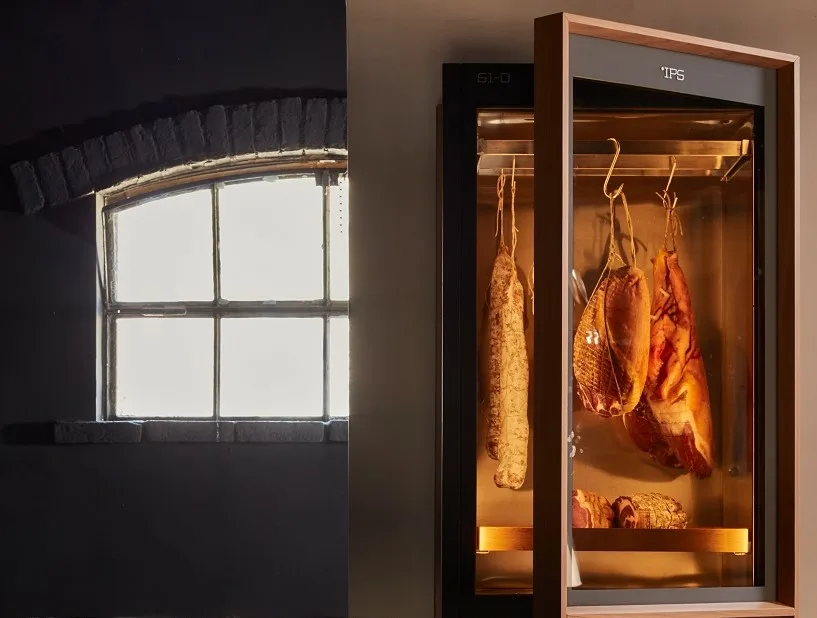
How to store cured meats in IP cellars
For the correct preservation of cured meats, the quality of the product is the necessary prerequisite. Products such as Prosciutto di San Daniele, Nebrodi black salami, Culatello, coppa also known as capocollo, soppressata and Tuscan and Emilian hams are products that require a suitable environment to be preserved. They are products that are themselves typical, sometimes still artisanal, and that have in common the tradition of the places where they are produced, often handed down from generation to generation.
In the IP cellars, they can be stored hanging at an ideal temperature ranging from 16 to 18 degrees centigrade and, once opened, they can be stored inside the same cellar trying not to compromise their quality through different preservation methods.
Parma Ham with the bone, for example, can be hung and its preservation can last up to 24 months, in an environment with a temperature between 16 and 18°. Once started, it can be preserved by covering the used part with gauze.
Many butchers recommend the gauze technique as a preservation method that should be repeated every time it is used.
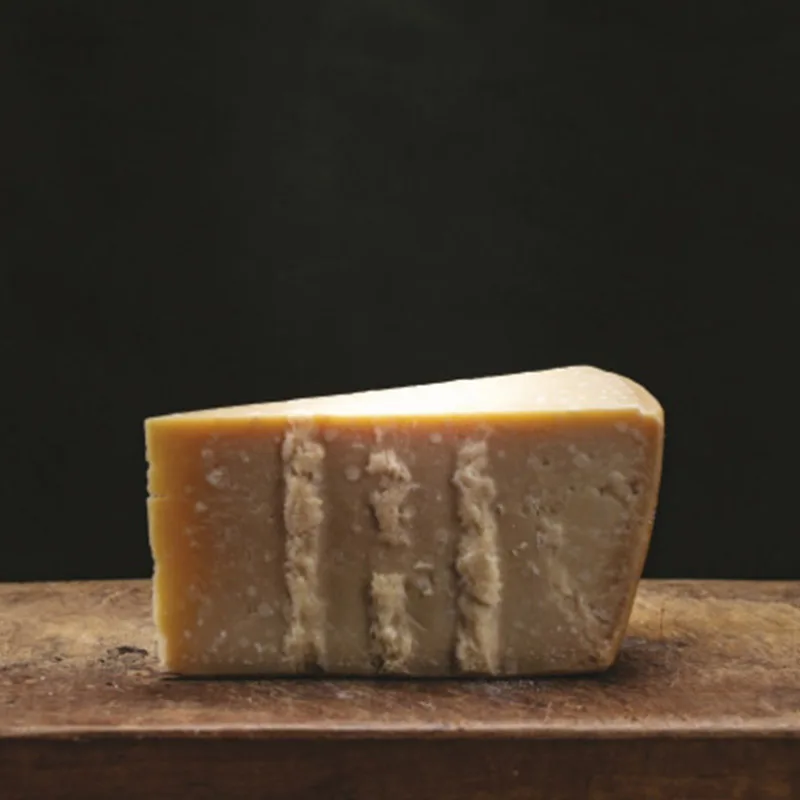
Preserving cheeses
In order for cheese to maintain its taste and flavor, it cannot be subjected to sudden changes in temperature that would compromise its quality. To store cheeses correctly, it is important to maintain, as with cured meats, a cool, humid and clean environment.
Also in this case, humidity is an aspect to keep in mind because, if they are not stored with the right humidity they will tend to dry out, losing all their particular organoleptic characteristics.
For example, some cheeses need, as described by various cheesemakers, to breathe otherwise they will tend to sweat, thus losing their aromas, scents and characteristic flavor. In fact, it is necessary to avoid temperatures that are too low (cheeses do not like the cold) or too hot.
The storage temperature should remain between 4 and 12 degrees centigrade for hard cheeses and 4 degrees for goat cheeses, with a humidity of 85 or 90%. Furthermore, they should be stored in a well-ventilated environment without direct light. Storage at room temperature is not recommended, except in some cases, as mold and bacteria that are dangerous to our health could develop.
The IP wine cellar is therefore the ideal place to store them.
How to store different types of cheese
Appreciated all over the world, the best known are Parmigiano Reggiano, Grana Padano, Pecorino Romano, Mozzarella di Bufala, Gorgonzola and Taleggio.
To distinguish a cheese, it is first necessary to know each stage of its production. They are distinguished by many aspects such as the different type of milk used, which can be sheep’s, goat’s, cow’s or buffalo’s, by the water content where, based on the quantity of water used, you will have soft, semi-hard or hard cheeses and by the different processing of the paste and the maturing time.
Some Italian cheeses, such as Pecorino Romano or Gorgonzola, can be stored at room temperature wrapped in a cloth. However, in this case, it is important to pay attention to the ventilation and humidity of the environment itself. Each product has a specific storage method to preserve its flavor, depending on the milk used for production and the processing method. Mature cheeses, for example, require temperatures of 10-12 degrees with 70% humidity.
Some types of cheese can be wrapped in food paper or aluminum foil, avoiding as much as possible the use of food film that could prevent proper breathing and encourage the formation of unwanted mold.
Hard cheeses, such as Parmigiano Reggiano for example, maintain their organoleptic characteristics unaltered if stored at an optimal humidity level and away from other foods to prevent their fatty part from absorbing other odors present. They can also be stored for several weeks in large pieces to prevent the loss of internal humidity.
Mature cooked cheeses such as Montasio or Bitto should be stored between 10 and 12 ° C.
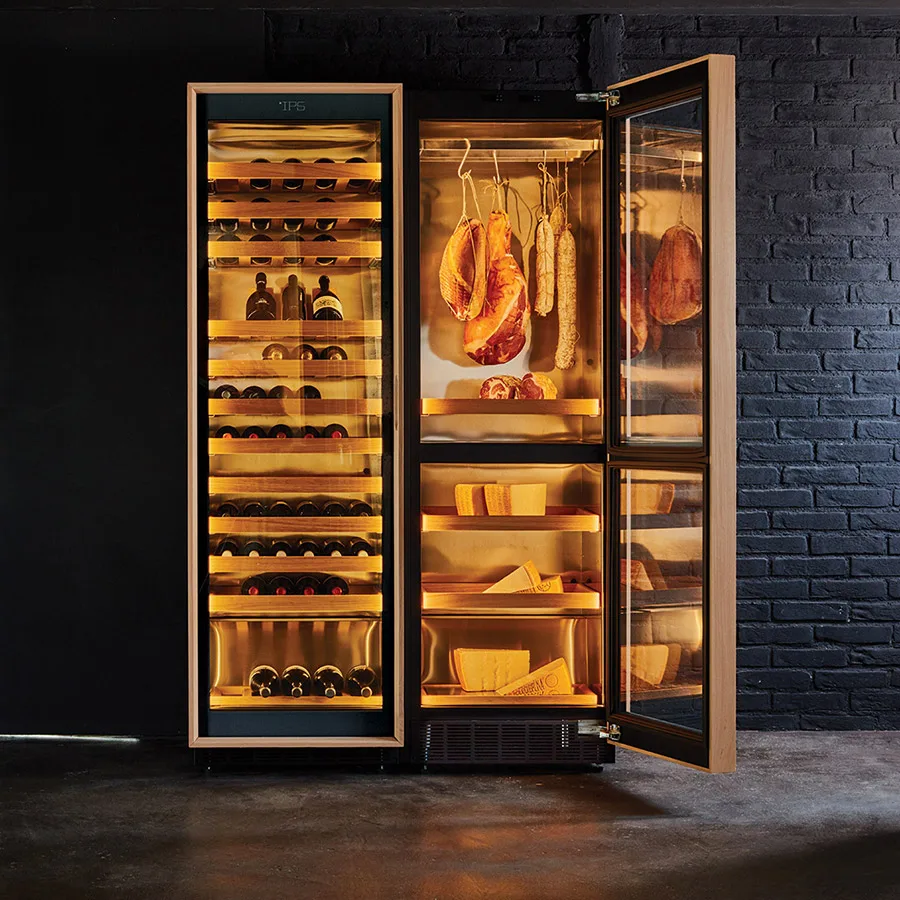
Small tips on preserving cured meats and cheeses
At IP we have carefully studied the characteristics of the individual products that can be stored in our cellars, from cured meats and cheeses, from wines to craft beers and why not, even cigars.
We would like to offer below some simple tips for the correct storage of cured meats and cheeses:
- Hard cheeses can be stored wrapped in perfectly clean cotton cloths
- Soft cheeses can be wrapped in baking paper or in glass or plastic containers
- Cheeses such as Camembert or Brie should be stored in the packaging purchased
- Only hard cheeses can be vacuum-packed
- Every time you start cutting the ham again, it is advisable to discard the first slice because, being on the surface, it tends to oxidize and dry out excessively
- Once sliced, cured meats should be placed in the lowest part of the refrigerator
- The best environment for storing whole salami is the cellar
- They should be stored separately
What if you notice some mold on the surface of your cured meats or cheeses?
Mold may form and can be removed directly with a knife. In this particular case, the most important thing in sausages is not to completely eliminate the casing because it serves as protection for the salami itself.
If mold appears on the rind of fresh cheeses, you can use a kitchen sponge and warm water and let it dry at room temperature. Another method for aged or semi-aged cheeses, where you will need to rub the rind with olive oil and let it dry.
Conclusions
Proper preservation of cured meats and cheeses requires special care and attention, useful for protecting these unique products from external alterations that would compromise their quality and above all their taste.
At IP, for over 40 years we have been dedicated to the study and development of wine cellars with a simple design, which for us are frames, which can best enhance the content itself and preserve it in the best way.
Our cellars are designed to be inserted both in domestic and private environments and in restaurants and wine shops.
